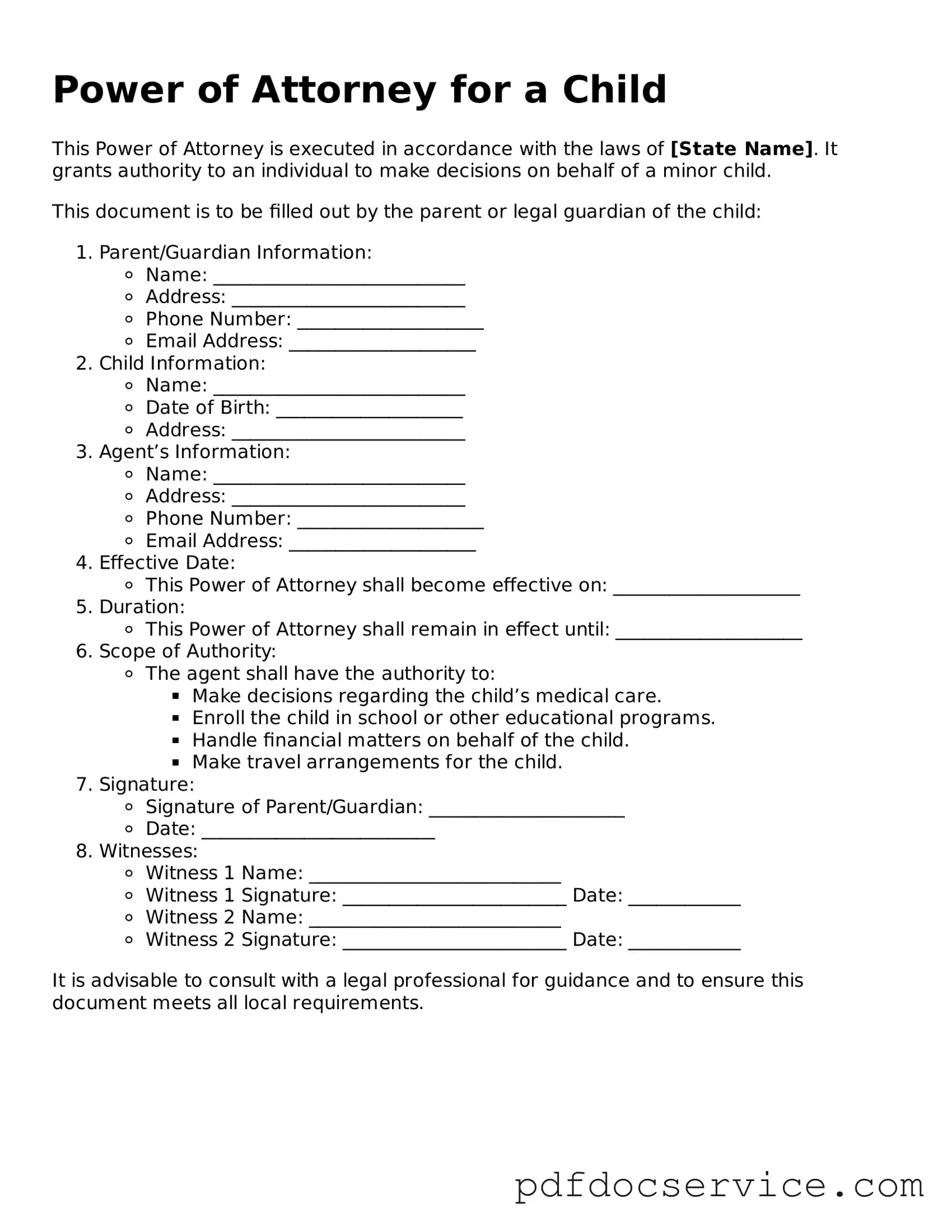What is a Power of Attorney for a Child?
A Power of Attorney for a Child is a legal document that allows a parent or guardian to designate another adult to make decisions on behalf of their child. This can include decisions related to education, health care, and general welfare. It is particularly useful in situations where the parent or guardian may be temporarily unavailable, such as during travel or medical emergencies.
Who can be appointed as an agent in this document?
The agent can be any responsible adult, such as a relative, family friend, or trusted neighbor. It is important to choose someone who understands your child’s needs and can act in their best interest. The agent should be willing to take on this responsibility and be informed about the child’s routines and preferences.
What decisions can the agent make on behalf of the child?
The agent can make a variety of decisions, including:
-
Medical decisions, such as consenting to treatment or medical procedures.
-
Educational decisions, including enrollment in school or special programs.
-
General welfare decisions, which can encompass daily care and supervision.
However, the specific powers granted can vary based on what you include in the document. It is essential to clearly outline the scope of authority to avoid confusion later.
How long does a Power of Attorney for a Child last?
The duration of the Power of Attorney for a Child can be specified in the document. It can be set for a specific period, such as a few months, or it can remain in effect until revoked. If the parent or guardian wishes to terminate the authority, they can do so at any time by providing written notice to the agent and any relevant institutions.
Do I need to have the document notarized?
While notarization is not always required, it is highly recommended. Having the document notarized can help verify its authenticity and may be necessary for certain institutions, such as schools or medical facilities, to accept it. Check local laws to ensure compliance with specific requirements.
Can the Power of Attorney for a Child be revoked?
Yes, the Power of Attorney can be revoked at any time by the parent or guardian. To revoke the document, a written notice should be provided to the agent and any relevant parties who may have relied on the authority. It is wise to keep a record of the revocation for future reference.
What should I consider before creating a Power of Attorney for a Child?
Before creating this document, consider the following:
-
Choose an agent who is trustworthy and understands your child’s needs.
-
Clearly define the scope of authority you wish to grant.
-
Discuss the arrangement with the agent to ensure they are willing to take on this role.
-
Understand the legal requirements in your state regarding the document.
Taking these steps can help ensure that your child’s needs are met and that the process goes smoothly when it is needed.
